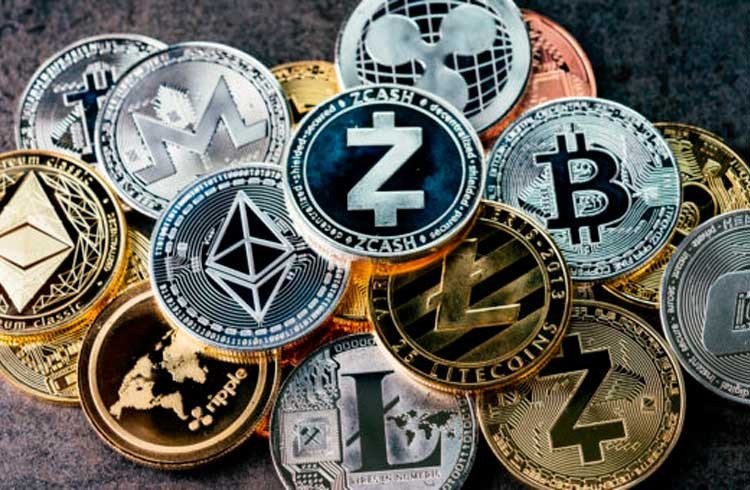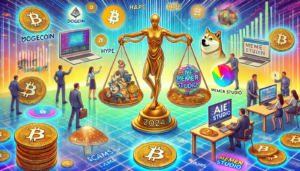
The cryptocurrency landscape has evolved dramatically since the inception of Bitcoin in 2009. As the first decentralized digital currency, Bitcoin set the stage for a financial revolution. However, the ecosystem has since expanded to include a vast array of alternative coins, known as altcoins, each offering unique features and benefits. Understanding this diverse and dynamic landscape is crucial for anyone interested in the future of digital finance.
The Rise of Bitcoin: A Financial Revolution
Bitcoin, created by the pseudonymous Satoshi Nakamoto, was designed to be a peer-to-peer electronic cash system. Its decentralized nature, powered by blockchain technology, eliminated the need for intermediaries like banks, offering a transparent, secure, and efficient way to conduct transactions. Bitcoin’s blockchain records every transaction in a public ledger, ensuring transparency and security.
Bitcoin’s success paved the way for the development of numerous other cryptocurrencies, collectively referred to as altcoins. These altcoins aim to address various limitations of Bitcoin, such as scalability, speed, and transaction costs, while introducing new functionalities.
The Emergence of Altcoins
Altcoins encompass a broad range of cryptocurrencies that differentiate themselves from Bitcoin in various ways. Some of the most notable altcoins include Ethereum, Solana, Cardano, and Tether (USDT).
- Ethereum (ETH): Ethereum introduced the concept of smart contracts, self-executing contracts with the terms directly written into code. This innovation enabled the creation of decentralized applications (dApps) on its platform, making Ethereum a cornerstone of decentralized finance (DeFi).
- Solana (SOL): Known for its high-speed and low-cost transactions, Solana has become a favorite for developers and users alike. Its blockchain can handle thousands of transactions per second, making it one of the fastest in the industry. However, if you’re wondering, “can you mine Solana?” the answer is no. Solana uses a Proof of Stake (PoS) consensus mechanism, which does not involve traditional mining but rather staking to secure the network.
- Cardano (ADA): Cardano focuses on sustainability, scalability, and interoperability. It uses a research-driven approach and peer-reviewed protocols to ensure high security and efficiency.
- Tether (USDT): Tether is a stablecoin, a type of cryptocurrency pegged to a fiat currency (in this case, the US Dollar). This stability makes it a popular choice for traders and investors looking to avoid the volatility common in other cryptocurrencies. Tether transactions require a USDT wallet address to facilitate transfers, offering a stable alternative for holding and transacting value.
Key Features of Altcoins
Altcoins often aim to improve upon Bitcoin’s framework by offering enhanced features:
- Scalability: Many altcoins focus on increasing transaction throughput. For instance, Solana’s blockchain can process thousands of transactions per second, significantly more than Bitcoin’s seven transactions per second.
- Smart Contracts and dApps: Ethereum’s introduction of smart contracts has revolutionized the crypto space, enabling the development of decentralized applications that operate without intermediaries.
- Interoperability: Altcoins like Cardano are designed to interact seamlessly with other blockchains, fostering a more connected and versatile crypto ecosystem.
Investing and Using Cryptocurrencies
Investing in cryptocurrencies requires a sound understanding of the market and careful consideration of the potential risks and rewards. Platforms like https://77.me/ offer resources and tools to help investors navigate this complex landscape. From buying and selling cryptocurrencies to accessing market analytics, these platforms provide valuable insights and services.
When it comes to using cryptocurrencies, security is paramount. Ensuring that your assets are stored in secure wallets and using reputable exchanges for transactions is critical. For stablecoins like Tether, transactions require a specific USDT wallet address, which ensures that the funds are correctly routed and securely held.
The Future of Cryptocurrency
The future of cryptocurrency looks promising, with continuous advancements and increased adoption. As blockchain technology matures, we can expect further innovations that enhance the functionality, security, and scalability of digital currencies. Governments and financial institutions are also exploring ways to integrate cryptocurrencies into the traditional financial system, potentially leading to widespread acceptance and use.
Conclusion
From Bitcoin to the myriad of altcoins available today, the cryptocurrency landscape is rich with innovation and potential. Understanding the unique features and benefits of each cryptocurrency is essential for navigating this dynamic market. Whether you’re interested in the high-speed transactions of Solana, the smart contracts of Ethereum, or the stability of Tether, the evolving world of digital currencies offers opportunities for investors and users alike. As the market continues to grow, platforms like https://77.me/ and secure transaction methods, such as using a USDT wallet address, will be integral to managing and maximizing your cryptocurrency investments.







